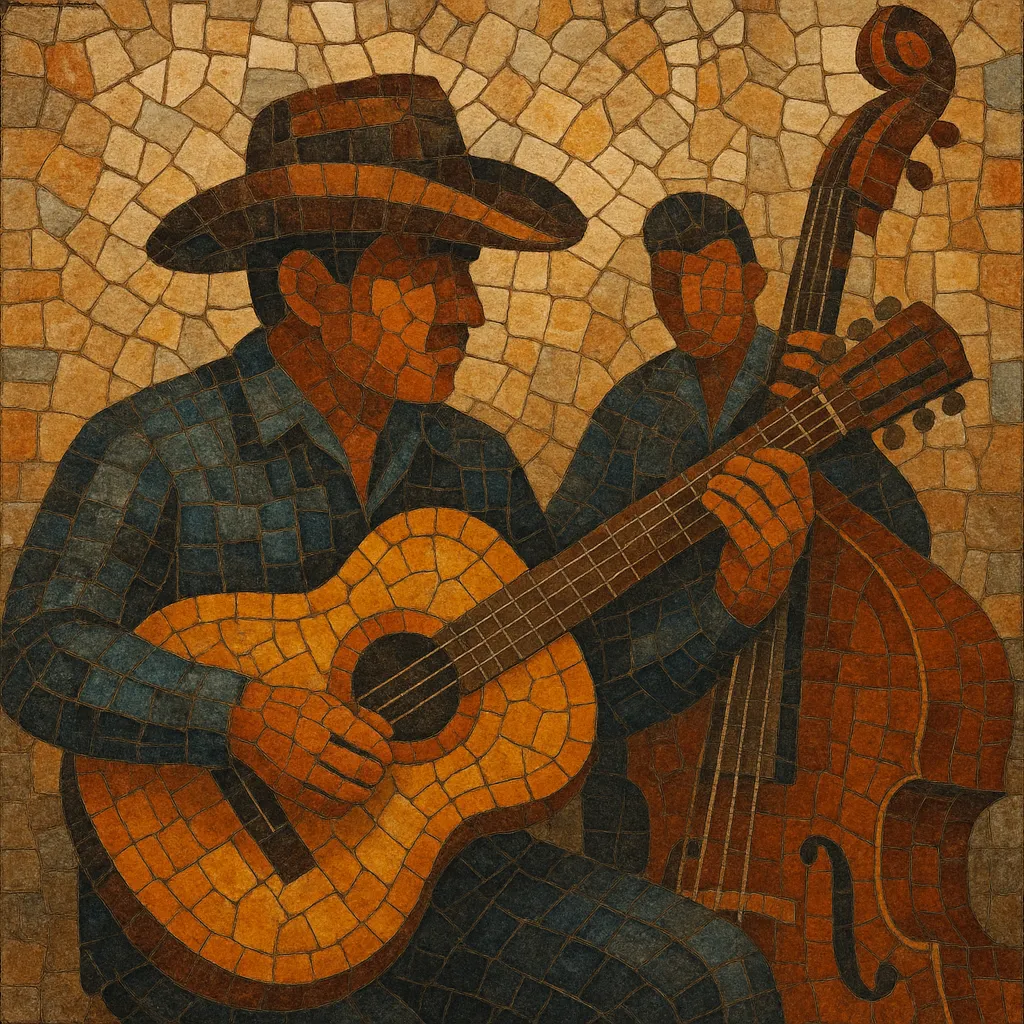Sierreño (música sierreña) is an acoustic, guitar‑driven substyle of Regional Mexican music rooted in the mountainous "sierra" regions of northwestern Mexico.
It typically features a trio format: a lead requinto guitar playing melodic lines and solos, a 6‑ or 12‑string rhythm guitar providing harmonic drive with vigorous rasgueado strumming, and a bass voice supplied by tololoche (acoustic upright), acoustic/electric bass, or, in modern variants, tuba.
Vocals are often delivered in close two‑ or three‑part harmonies, carrying narratives (corridos) and romantic themes (boleros, rancheras). The sound is percussive yet intimate—largely drumless—with tempos ranging from lilting waltzes to polka‑like two‑steps. Contemporary waves ("sierreño con tuba" and urban/crossover forms) expand the palette while preserving the genre’s core string interplay.
Sierreño traces to rural string ensembles in the Sierra Madre regions of states like Sinaloa, Sonora, Chihuahua, and Durango. Small, portable guitar groupings—requinto plus harmony guitar and a low bass voice—were well suited to the terrain and to social gatherings, drawing repertoire and phrasing from corridos, rancheras, and boleros.
During the 1990s and early 2000s, the format consolidated on recordings and regional radio. Acts such as Los Dareyes de la Sierra and later Los Hijos de Barrón helped codify the modern trio sound: bright requinto leads, aggressive strums, and tight vocal harmonies, usually without a drum kit. The style circulated alongside norteño and banda but stood out for its intimate, guitar‑centric timbre.
The 2010s brought a youthful renaissance. Ariel Camacho y Los Plebes del Rancho popularized virtuosic requinto work, tender romantic songs, and corridos in a stripped‑down setting. A parallel current swapped tololoche for tuba (“sierreño con tuba”), amplifying low‑end punch while keeping the drumless aesthetic; Ulices Chaidez y Sus Plebes and T3R Elemento further propelled the sound.
Digital platforms accelerated sierreño’s reach and spurred stylistic hybrids. Its guitar‑tuba template and melodic sensibility directly fed newer currents like corridos tumbados and corridos bélicos, which fused trap/pop attitudes with sierreño’s storytelling and acoustic drive. The result is a continuum where classic romantic boleros, narrative corridos, and urban‑leaning tracks coexist under the broader Regional Mexicano umbrella.
Sierreño remains a live‑friendly, songwriter‑forward format. Whether in purist trios with tololoche or modern lineups with tuba and subtle amplification, the genre’s core identity—expressive requinto, close‑harmony vocals, and narrative focus—continues to define its appeal.


